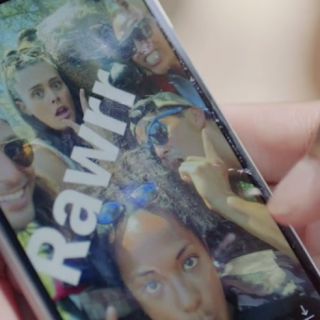The way you “like” things on Facebook has changed.
Last week, the social network rolled out Reactions to accompany the famous thumbs “like” logo, allowing you to express your feelings in a more nuanced fashion. The new panel of Reaction buttons (which look like a set of emoji icons) allow users to express a wider range of emotions. Facebook have given users the options of “love”, “haha”, “yay”, “wow”, “sad” and “angry”.
During a recent analyst call Chief Executive, Mark Zuckerberg declared “When you only have a like button, if you share a sad piece of content or something that makes you angry, people may not have the tool to react to it.”
The Power of Emotions and Reactions as a Signal
Many will note the selection of Reactions is heavily weighted towards more positive expression, something many have responded to as restrictive. Last year, the team behind the Disney Pixar Movie: Inside Out grappled with the same issue of how to personify the core emotions of a young girl. The film paired a number of positive and negative emotions covering: Joy, Sadness, Disgust, Fear and Anger. While the Pixar production appears to be balanced, it contrasts clearly with the options Facebook rolled out to its global user base of more than one billion members.
Facebook’s goal is to publicly keep the platform positive (hence no dislike button) and provide us with the optimal Newsfeed experience. By giving its user base the power to express a broader range of emotions, the platform hopes it can still remain an ambivalent force for the good of its community. This will also go some way to help consumers see the stories that matter to them most by focusing on the positive more so than the negative.
This move has come from a number of trends the social network noticed. Firstly, users are careful about how they curate their image online and how they respond. Secondly, using a keyboard on a mobile device isn’t always easy and the like button does not allow you to express yourself in an elegant way. The hope is the new panel of reactions will enable this from an engagement perspective.
A New Opportunity for Advertisers
Interestingly, for brands and advertising agencies, the data being collected from user behaviour will most likely end up in the Facebook advertising dashboard. The Big Blue App still remains the company’s principal business. The animated reaction images will let users more accurately respond to posts, which may also provide Facebook with more data on what people like, love and hate. And such data could be a goldmine for Facebook’s advertising business.
For advertisers, if this new system of recognising and measuring emotions can be proven accurate, it represents an enormous opportunity. The ability to use Reactions to assess sentiment around content, creative or broader campaign strategy and tactics can lead to more responsive and relevant campaigns. For example, if a well-known sports brand produces a new campaign causing a significant change to its core product it is likely to elicit polarising responses. For advertisers, they will be able to produce tailor made content to users who respond differently. This will lead to users only seeing sponsored content that is contextually relevant based on behavioural signals.
Other opportunities include using exclusion function within the Facebook Ads Manager for poorly performing campaigns that generate more “anger” or “sad” responses and up weighting media investment towards campaigns or specific posts that generate more responses around “love” or the effusive like button. The ability to tactically respond to user behaviour will lead to more effective advertising and strong quality scores which has a long-term positive effect on media investment for advertisers using the Facebook Advertising suite of products.
The Advertisers Opportunity
There are several big questions on the lips of advertisers: Why these Reactions specifically? How accurate are they? Are we able to tell if users are being honest?
Many in the industry have viewed the rise of ad blocking software as a threat to digital advertising. Facebook has recently updated its 10-K filing to investors informing them about the potential threat of ad blocking software. However, the recent release of ad blockers into both the iOS and Android stores has not seen these apps breach the top 100 most downloaded apps; meaning the future of Facebook’s advertising business remains safe.
The release of Reactions proves that demand for ‘real’ people’s attention is increasing. Furthermore, the sheer scale of emotional data that will soon be accessible, not just to advertisers but for all to analyse like never before. This represents a unique opportunity to translate the emotional behaviour and response of users on the platform; giving Facebook a huge opportunity to build a robust universal vocabulary to understand consumers on a global scale.



